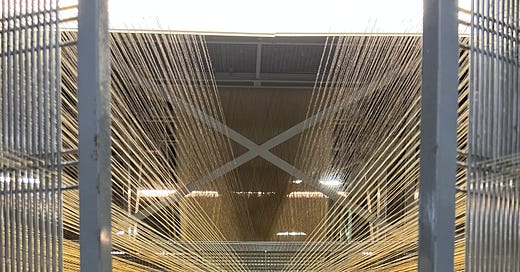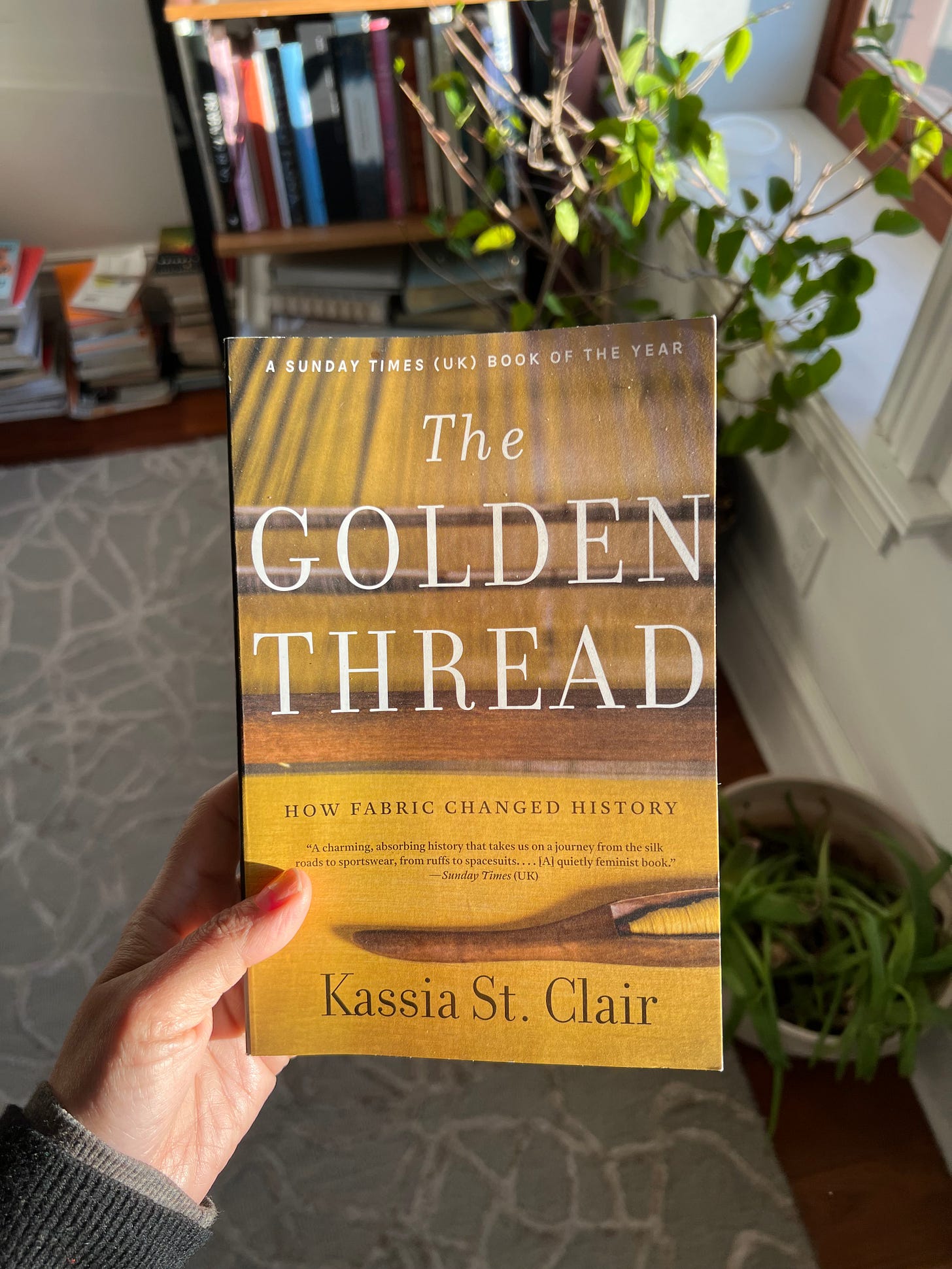Last week, news of the “Liberation Day” tariffs dropped like a cartoon anvil on the world stage. Most days, I try to block out the insanity, but this headline was one I couldn’t avoid. As a textile designer in the luxury home furnishings industry, my work relies on global manufacturing. The collections of fabric, wallcovering and passementerie I design for interiors are created by weavers in Italy, printers in the UK, embroiderers in India, and beyond. The few surviving domestic suppliers rely on raw materials sourced from all over the world. From printed linen to jacquard velvets to the grasscloths beloved by interior designers, there was no denying the interconnectedness of textile production.
The morning after the tariffs were announced, I opened my budget spreadsheets and tried to comprehend this preposterous new math. Unsure of how to move forward, I spent some time on the internet skimming articles, AI-generated summaries and the parody that is the White House website. What exactly were Americans being liberated from? I couldn’t understand how this sweeping gesture would benefit the economy, let alone my boucle-swaddled corner of the world.
When I joined the textile industry in the early 2000s, I soon realized I’d missed the glory days. Everyone from the mill reps to the purchasing agents spoke of the 90s like the gold rush, a time when purchase orders were written on the spot, and fabric flowed off the warehouse shelves. The collective nostalgia only underscored how difficult business was becoming post 9/11.
After the economic crash of 2008, my industry struggled to rebound (myself included - I was laid off twice during this time). Each year since, I’ve watched celebrated mills and major textile editors close their doors. Strategic mergers and private equity investment saved some players. With every shift, the industry reshaped smaller than the year before.
In the pandemic of 2020, my profession had never felt more inessential. Then months of lockdown made everyone want to redecorate. The sudden surge in home goods reinvigorated business for those able to meet the demand. But like any wave, what goes up must come down. Now I’m waiting to see how the tariffs will impact the textile ecosystem.
As I brace for the future, reading about the past is actually bringing me comfort. “The Golden Thread: How Fabric Changed History,” by writer and historian Kassia St. Clair explores how textiles have been global for centuries. I’m currently on the chapter about the Silk Roads, the vast network of ancient trade routes active from the second century BCE to the fifteenth century. Goods, artistic and religious ideas, letters and news flowed between Asian countries and the European and Mediterranean worlds. “The Silk Roads were not constant over time,” St. Clair writes. “they waxed and waned, broke up and re-formed in response to demand and unrest across the region.”
The further I get into this book, the more I realize how this current moment is just that - a moment in a deeply rooted history. One administration can only alter its course so much. Textiles are fundamental to human existence. Where they’re made, and how they find their way around the world will continue to shift and change, just as they have for a millennia.





